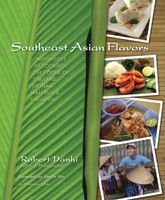Advertisement
Cilantro
Coriandrum sativum
By Robert Danhi
Published 2008
Cilantro is also called “coriander leaf” or “Chinese parsley.” It is, in fact, the leaf of the same plant from which the spice, coriander seed, is sourced. It has a lemony, rosy essence and a slight tartness on the palate. It’s the most widely used herb in Southeast Asian cooking. Cilantro leaves, stems, and roots are used in various preparations A notable percentage of people perceive its flavor to have an unpleasant “soapy” note. This is a genetic predisposition more that a personal preference and cannot be unlearned. When a recipe calls for chopped cilantro, include the leaves and also bits of the tender stems. Usually the more fibrous parts of the stems, the bottom one inch or so, are discarded. Whole sprigs are central to the table salad in Thailand and Vietnam. Ethnic Indians in Malaysia and Singapore use this tender herb for cilantro chutney. In America, the straggly root is usually cut off at the farm, but some markets carry cilantro with the roots still attached. The root’s earthy aromatic character is an essential element in Thai curry pastes. If it is not available, substitute 2 tsp. of minced stems for every one root. Thai: pak chee; Malay: daun ketumba; Vietnamese: ngò; Tamil: kothamalli kolle


